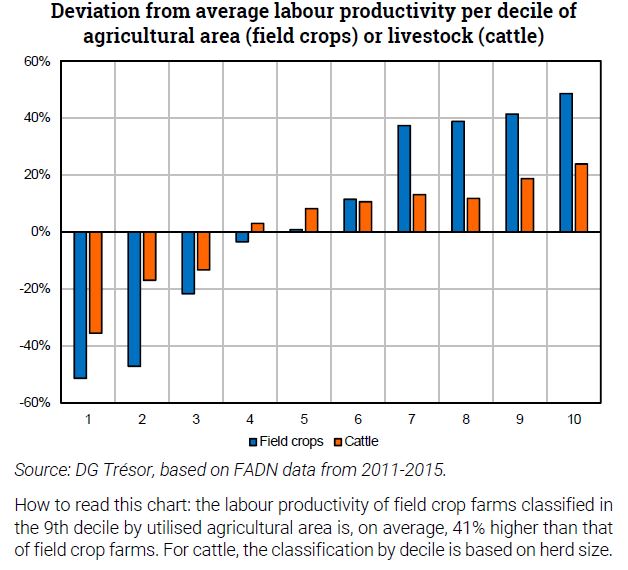Productivity and environmental impact of farms according to their size
An analysis is proposed to illustrate the link between farm size on the one hand and farm productivity and environmental impact on the other, for beef and arable farms. On average, large farms appear to be more productive. The environmental impact per hectare does not seem to depend significantly on size for crop farms, but seems to be more unfavourable for large beef farms.
Recent agricultural policies, particularly the EU's Common Agricultural Policy, distribute aid on the basis of holding size, measured in terms of agricultural area or number of animals. Thus, some aid is allocated only to a farm's initial hectares or, in the case of coupled support for livestock, aid is at a decreasing rate based on herd size, and then capped.
The link between farm size and agricultural policy objectives is not fully documented in France. Large holdings are generally presented as being less virtuous for the environment and small holdings as being less productive. Analysing data from the Farm Accountancy Data Network (FADN) for the period 2011-2015 allows us to shed some light on these links.
On average, labour productivity increases with the size of the farm, for both field crops and cattle (see chart on this page). This can be attributed to economies of scale in terms of labour (large farms are less labour-intensive), inputs, equipment (some of which can replace labour, such as tractors or automatic milking), veterinary costs and animal feed. However, farm size explains only a small portion of the variation in productivity.
The environmental impact of large farms is more mixed. The negative impact increases with size in the case of cattle farming, but there is no significant correlation with size in the case of field crops. This impact is measured using an environmental indicator developed by the French National Research Institute for Agriculture, Food and Environment (INRAE), which relies on accounting or farm structure data in relation to the agricultural area farmed or livestock (e.g. the share of permanent and temporary grassland in the farm's utilised agricultural area).
